I wrote this article in Japanese and translated it into English using ChatGPT. I also used ChatGPT to create the English article title. I did my best to correct any translation mistakes, but please let me know if you find any errors. By the way, I did not use ChatGPT when writing the Japanese article. The entire article was written from scratch by me, Saikawa Goto.
Introduction
Movies and books covered in this article
Three takeaways from this article
- Tanaka Min feels uncomfortable expressing “self” or “individuality” in modern ballet practice room.
- No matter how deep we dig, there is no right or wrong answer to Tanaka Min’s “dancing.
- A common ground with world-renowned mathematician Oka Kiyoshi and a chance encounter with philosopher Roger Caillois.
Self-introduction article


Published Kindle books(Free on Kindle Unlimited)
“The genius Einstein: An easy-to-understand book about interesting science advances that is not too simple based on his life and discoveries: Theory of Relativity, Cosmology and Quantum Theory”
“Why is “lack of imagination” called “communication skills”?: Japanese-specific”negative” communication”
The quotes used in this article are based on notes taken at the movie theater from movies in Japanese and are not direct quotes from the foreign language original movies, even if they exist.
The Documentary Film “The Unnamable Dance”, Which is Close to “Tanaka Min” Who Pursues the One and Only “Dancing”

I learned about the existence of a dancer named “Tanaka Min” for the first time through this movie. Maybe I’ve seen him somewhere before, but I didn’t recognize him as “Tanaka Min”.
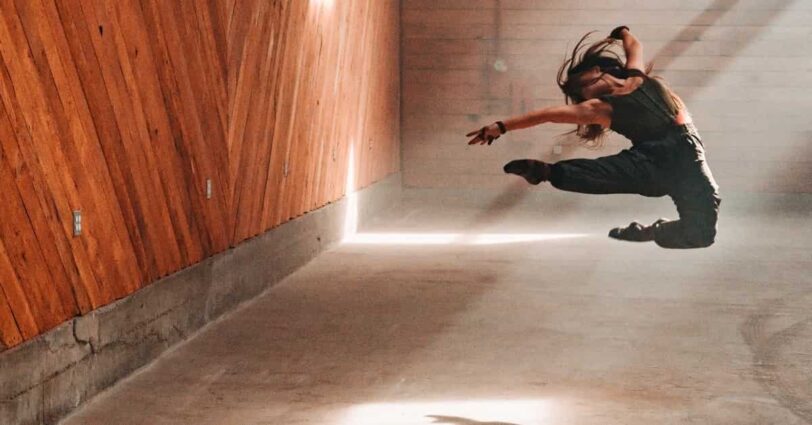
Recently, “dance” has become a commonplace presence that is incorporated into school classes, and I think many young people are diving into that world. However, Tanaka Min’s “dancing” is a little different from “dance”. I’ll touch on that later, but Tanaka Min’s unique and unparalleled presence overwhelmed me.
Is “Expression” the Ultimate Goal of “Expressing Myself”?

In the movie, Tanaka Min talked about an episode when he attended a modern ballet class and how he hated the “mirrors” in the practice room. This was before he got his big break in France.
I felt like I was being controlled and trapped by the version of myself reflected over there.
“The Unnamable Dance”(director: Inudo Isshin, starring: Tanaka Min)
I remembered something when I heard his statement. It was a scene from a variety show I had seen on TV not long ago.

I was watching a program where studio guests comment on videos shot around the world. A foreign video was playing of a tractor driver who had found a car stranded on a flooded road and rescued four people, including a child. The tractor driver was filming the video himself. He was able to perform the rescue operation while filming with his smartphone because there were several other people there besides the tractor driver.
One of the studio guests who saw this footage said, “It’s a little creepy that he’s taking a selfie while he’s rescuing people.” I remember empathizing with that statement.

It’s not quite an episode like Tanaka Min’s story, but both cameras and mirrors can be said to reflect the “self from the perspective of others.” It was impressive how different sensations were expressed in response to this. The tractor driver shared his “self from the perspective of others,” while Tanaka Min felt uncomfortable with the sensation of being dominated by the “self from the perspective of others” reflected in the mirror

At the time when he disliked mirrors, he was told to “express ‘yourself'” and “show your personality.” However, he stopped and pondered this “common sense thinking.”

I couldn’t grasp what it meant to “express myself.”
“The Unnamable Dance”(director: Inudo Isshin, starring: Tanaka Min)
These words can be said to be very important in capturing the existence of Tanaka Min.
Whether it’s called dance or something else, it should generally be regarded as a means of “self-expression.” In other words, the more “I” or “individuality” is expressed, the more it is evaluated by society. However, Tanaka Min doesn’t think that way. And he continues to hold onto that discomfort he once felt, never letting go.

After that, Tanaka Min met a person named Hijikata Tatsumi who told him,
Countless people have lived before us. Things like “me” or “individuality” surely exist somewhere in the past.
“The Unnamable Dance”(director: Inudo Isshin, starring: Tanaka Min)
Tanaka Min said that he felt relieved after hearing these words in.
Then, he made the decision to start farming at the age of 40, driven by his own conviction to “build his body through physical labor and dance with that body.”

Dancers make usually their bodies for the purpose of dance. I thought it was different to dance with such body.
“The Unnamable Dance”(director: Inudo Isshin, starring: Tanaka Min)
This idea of his was truly remarkable. For Tanaka Min, “dancing” is not about “moving your body,” but rather about something that moves your body for you. He doesn’t think about “working his abs for dance,” but rather aims to achieve a state where his body moves naturally as it should. He describes it as follows.

I wanted to explore dancing that before it became art.
“The Unnamable Dance”(director: Inudo Isshin, starring: Tanaka Min)
From the way Tanaka Min verbalizes his own “dancing,” it becomes easier to understand the essence of his “dancing.”
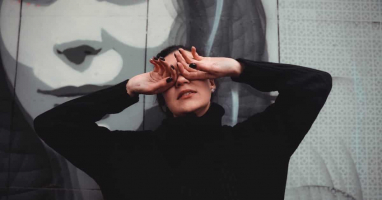
Tanaka Min Believes There is No “Correct Answer” to His Dancing.
After watching the film, I want to try to explain a bit about “Tanaka Min’s ‘dancing'” that I vaguely grasped. To explain it, let’s distinguish between “dance” and “dancing” from here on. Here,
- Something that can be classified into a genre like ballet or hip-hop is called “dance”
- Something that can only be classified as “other” and doesn’t fit into any specific genre is called “dancing”
Of course, Tanaka Min belongs to the latter.
Now, I’m not saying that there is a “correct answer” to dance. There wouldn’t be any right answer at the stage “before moving the body.” However, “after moving the body” is a different story.

In the case of “dance”, in events like recitals or competitions, of course there is an “evaluation” and winners and losers are determined. This situation can be said to have a “clear correct answer.” However, even outside of these events, for “dance”, it can give the impression to those who watch it such as “cool”, “want to imitate”, “it’s well done “. Since not all “dance” gives such a feeling, it is not unnatural to call the evaluations of “cool”, “want to imitate”, “it’s well done “as “correct answers” for convenience.
In that sense, it can be said that “dance” has a “correct answer”.
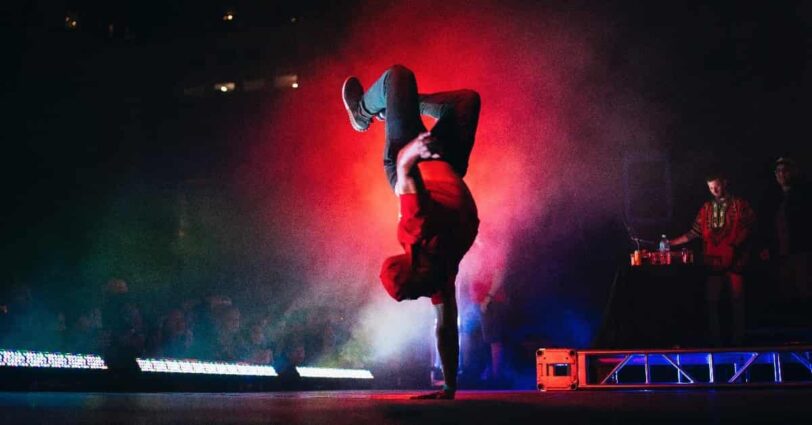

On the other hand, “dancing” is different. It cannot be classified into any genre and there is no clear evaluation like in a recital or competition. Also, watching Tanaka Min’s “dancing” won’t necessarily give you a sense of “cool,” “I want to imitate,” or “it’s well done.” There should be a personal evaluation criteria behind these feelings, such as “I feel this is ‘good’ for me,” but Tanaka Min’s “dancing” is not the kind of thing that can be evaluated based on some criteria. There is no framework for pointing out “that part is different” or “that’s a mistake” for any of his movements.

Of course, there may be some people who watch Tanaka Min’s “dancing” and feel like it’s not cool, but that’s just a “personal opinion” and not a “judgment”. I don’t think there is a standard of right or wrong when it comes to evaluating his “dancing”.
So, ironically, I felt like I could watch Tanaka Min’s “dancing” with ease precisely because there is no “right answer”. It’s difficult to avoid the dilemma of “the one who evaluates is also being evaluated” when there is a “right answer”. That’s why beginners might be afraid to evaluate what they see as “good”. However, there is no right or wrong in Tanaka Min’s “dancing”. No matter how you feel about it, it’s just a “personal opinion”. I felt that this fact is a point that allows people to experience “dancing” without feeling inferior due to “not understanding” or “lack of knowledge”.

I think the difference between “dance” and “dancing” written here ultimately arises from a difference in purpose, such as “for what?”.
In the movie “Honeybees and Distant Thunder” that I watched before, there was a line like this:
If there was a piano in a field, even if I was the only one in the world, I would definitely play the piano.
“Honeybees and Distant Thunder”(Film director:Ishikawa Kei、starring: Matsuoka Mayu,Matsuzaka Tori)

The person who said this clearly has the sense that “I play the piano because I want to play, even if there is no reason like having an audience or competing in a competition.” And I felt the same thing about Tanaka Min. Even if all human beings disappear from the world and Tanaka Min is left alone, he would still dance in that world. That is how I felt.
What about “dance”? Of course, there would be people in the world who would continue to dance even if they were the only one left. However, I believe that many people dance because “I want to be recognized by someone else,” or “I want someone else to see them.” In the end, this is similar to “looking at oneself in the mirror” or “taking a selfie of oneself,” which is probably far from what Tanaka Min is looking for.

Including the blog articles I’m writing like this one, all “expressions” and “creations” basically assume the existence of “others”. It’s such a natural thing that I don’t feel any discomfort in my actions. However, through this movie, I learned about Tanaka Min’s way of living without assuming the existence of “others”, which prompted me to think about “expressions that assume the existence of others”. I felt that this movie also included such a perspective.

Common Points between Tanaka Min and World-Renowned Mathematician, Oka Kiyoshi
While watching the movie, I was reminded of the world-renowned mathematician, Oka Kiyoshi. First, let me introduce a bit about Oka Kiyoshi.

He was a mathematician known for his great achievement of solving three super difficult problems in the field of “the theory of functions of several complex variables” all by himself. When he published his research results, he was a completely unknown figure both nationally and internationally. The situation where someone who was previously unknown had solved super difficult problems that had continued to puzzle many mathematicians one after another was so unbelievable that in Europe, it was believed that there was a group of mathematicians called “Oka Kiyoshi.” It was an achievement that was impossible to believe that one person could have accomplished alone.
Oka Kiyoshi was also known for not doing anything other than “mathematical research” and “farming.” He continued to live a life of conducting mathematical research in the intervals between farming in Kimi Village, Wakayama Prefecture, where he was born and raised from his late 30s. No wonder his name was not known in Japan. And it was this research during his seclusion in Kimi Village that was introduced to the world, and he became recognized as a world-renowned mathematician overnight.

Don’t you feel that it is somehow similar to Tanaka Min? It could be said that the two people who became top runners in fields as different as “dancing” and “mathematics” both constantly had the thought of “how should we live to pursue the essence?” within them, despite being completely unrelated.
In the movie, Tanaka Min says:
What I’m doing can be called “dancing,” but ideally, a “dance” should be created between the audience and myself.
“The Unnamable Dance”(director: Inudo Isshin, starring: Tanaka Min)

In a sense, this word can be said to embody the essence of his “dancing.” He interprets that “dancing” exists not between the separate entities of “Tanaka Min” and “audience,” but rather within the relationship of “Tanaka Min and the audience.”
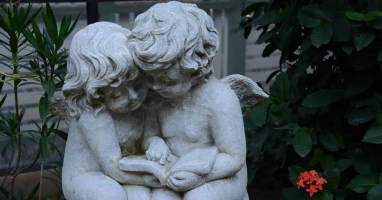
On the other hand, let’s also introduce this word known to belong to Oka Kiyoshi.
The essence of mathematics is not “calculation” or “logic,” but the function of “joucho.” (“Joucho” refers to a Japanese sense that is difficult to translate into English and refers to “emotion.”)
It’s enough to understand “joucho” as “emotions directed towards some object.” In other words, both Tanaka Min and Oka Kiyoshi, in their respective fields, were trying to pursue the essence of things through the “relationships with surrounding things.”


And to achieve that realization, they did “farming.” This commonality is also a very interesting point. Perhaps they strongly had the consciousness of “perceiving something beyond human knowledge from nature.” As a result, they have achieved great achievements in their respective fields, and their behavior suggests points to consider.

Tanaka Min Longed for Only Roger Caillois to See His “Dancing”
The phrase “The Unnamable Dance,” which is the title of this movie, was spoken by the philosopher Roger Caillois.
Tanaka Min first gained recognition in France. He became famous overnight when he performed “dancing” in Paris in 1978. Since then, various “sweet temptations” have come his way. “If you have ‘dancing’ as a finished product, you can live in this world for 20 years,” and “If you create a school in Paris, you can create a new school of dance,” he was told. Tanaka Min rejected all of these invitations with the utmost disgust. Given his stance on “dancing,” I think it’s a natural feeling.
There is one person whom Tanaka Min wanted more than anything else to see his “dancing.” That person is Roger Caillois. Tanaka Min fell in love with Caillois’s book, “Man, Play and Games.”



Tanaka Min contacted Roger Caillois and performed “dancing” in a room where “the Eiffel Tower seemed to come in through the window”. Then, after seeing it, Roger Caillois commented,
Please continue ‘The Unnamable Dance” forever.
“The Unnamable Dance”(director: Inudo Isshin, starring: Tanaka Min)
This phrase is exactly opposite to the “sweet temptation” that gathered around Tanaka Min. Although it is not mentioned how Tanaka Min felt about this comment, I felt that perhaps Roger Caillois’ words have been the driving force behind Tanaka Min’s actions to this day.
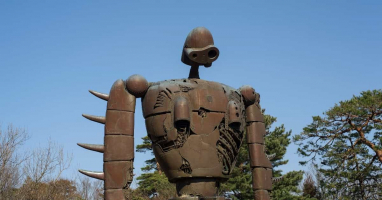
Conclusion

Tanaka Min calls improvisational outdoor dance “ba-odori”. In the movie, he is shown performing “ba-odori” in various places, such as staircases leading to urban squares and shrines.
The many “speeds” in the world are all surging together.
“The Unnamable Dance”(director: Inudo Isshin, starring: Tanaka Min)
He may be able to see something invisible to us that resides in each location, and that something that only he can see may be freely manipulating his body. It was a sight that made us feel that way.
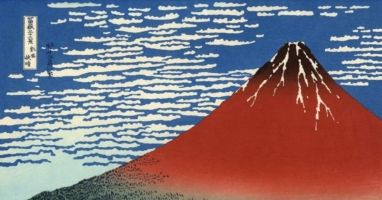
Tanaka Min’s “dancing” and other creative expressions make me envious of those who can convey a sense of “something” that only they can see. This applies not only to dancers but also to artists and writers. However, every time I encounter such “talent,” I am reminded of my own inability to reach that level.
I feel a sense of happiness as if my brain is sinking into the deep sea…
“The Unnamable Dance”(director: Inudo Isshin, starring: Tanaka Min)
Tanaka Min, who can still speak like this at the age of 74 on a street corner in Santa Cruz, Portugal, has left me with an indescribable sense of “admiration.”

Published Kindle books(Free on Kindle Unlimited)
“The genius Einstein: An easy-to-understand book about interesting science advances that is not too simple based on his life and discoveries: Theory of Relativity, Cosmology and Quantum Theory”
“Why is “lack of imagination” called “communication skills”?: Japanese-specific”negative” communication”







コメント